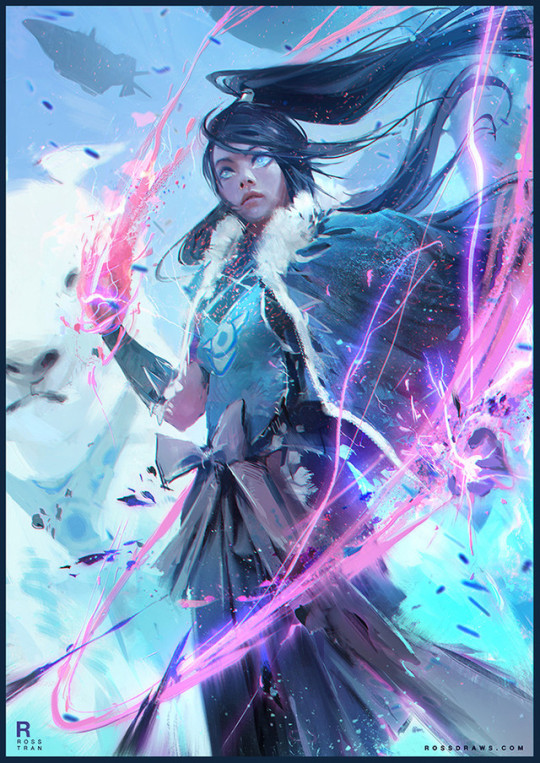Don't wanna be here? Send us removal request.
Text
DOTA2 Research
The result is the Dota 2 International Interactive Compendium. It's a virtual book that costs $10 and allows owners to sync up with other viewers to play rounds of Dota 2, make them eligible for special virtual item drops throughout the duration of the tournament, vote on tournament player awards, make predictions of winning teams and possibly more importantly see 25 percent of their $10 payment placed in the winner's prize fund.
As of press time (July 2014) the current prize pool sits at $10,767,441, $1.6 million of which was fronted by Valve. That means over 3.6 million Compendiums have so far sold, with $2.50 of the full price tag for each digital book put toward the pool fund.
0 notes
Text
Research
In a Survey of 8893 people in America it was found that:
Close to half of non-purchasers of microtransactions are not willing to spend any money on them
48 percent felt the content was not worth the extra expense
Half of non-DLC purchasers stated the DLC was not worth the money
16 percent believe the extra content should have been included in the full game price
The study went on to say that the preferred method of unlocking extra content in a game is to spend virtual currency on it. However, 78 percent of respondents said they would consider spending money to buy microtransactions to get things like weapons and power-ups, among other things. A key consideration here is that the likelihood of a person spending money on extra content is also tied into how much that person enjoys a particular game and the cost of the add-on content. Attitudes towards mictrotransactions are mostly positive, with the majority (77 percent) claiming to like that microtransactions allow them to extend their enjoyment of a particular game68 percent believe the pay-to-win aspect of microtransactions within gaming is unfortunate Although "most" found microtransaction prices to be "reasonable," more than half said they would be more incentivized to buy if prices were lower.
0 notes
Text
Should games be made to entice players to spend more money and is it morally acceptable to do so?
In the gaming industry, both consumers and developers within the last decade have gone though many changes. One of the biggest changes that has a lot of arguments behind it on both sides is when designers release a game for a certain price and then within the game, consumers are able to buy more content for the game they have purchased. In today’s industry, there are so many different downloadable content for consumers to buy, whether it be new skins for their in-game character, or new maps and locations for the player to explore.
There are three ways that people tend to view the option of buying extra content for a game: some people hate a game that implements this as part of the game’s design, some people love buying extra content for their game as a loyal fan of the developer or franchise, and some are just indifferent with the option the question that is always asked is, overall is having players spend more money on their already purchased game morally acceptable?
Looking back on the industry, you could argue that micro transactions initially began with arcade machines. Many people would go to the arcade and spend their money playing a game. They would play the game once and then would have to continue spending more and more money to play again and to beat their high score. The player would begin to find the addictive aspect of asking themselves, ‘What if I win on my next try?’ they would put more money in the machine and the cycle would start again. “You can easily burn $20 in virtual items in a short period of time, and you don’t get anything tangible in return.....just more ability or extra gameplay within the game itself.” (triosdevelopers 2014). This aspect of ‘what if?’ applies to many games today, mainly with games that include purchasable loot boxes.
Loot boxes are a gamble; you spend your money on a chest that contains normally between 1-5 items that are completely random for whatever rarity each item will be. There are many gamers that love this aspect of a game as they can show off to other players in-game the cool skins they have unlocked through purchasing chests. The addictiveness takes a hold on players as well with players having the incentive to collect all the items a game has just for the sake of having them all.
“Cosmetics do matter, and unlocking them is an important part of the player experience.” (Forbes 2016)
There are gamers that despise these randomised chests and will only see them as an easy money grab for developers praying on gamers need for these exclusive skins and weapons. This idea isn’t necessarily wrong in the aspect of many games will give you duplicates of items you have already received from chests you have purchases before.
Many games also do promotions that give players a free chest for say Christmas or any other festive event. This can be seen again as developers feeding into the addiction of players again. A player will open their free chest only to realise that the items they received were all duplicates and the same mentality and cycle from the arcade proceeds to take over, ‘maybe if I open one more I’ll get the item I want’. When receiving duplicate items most games that provide this service usually do not compensate the player very well thus resulting in the player buying more chests to their addictions content.
Morally, this type of purchasable extra content is down to the player honestly. It is down to the player to choose whether or not they want to spend their money on the extra glamourous items. What isn’t morally acceptable is providing micro transactions that provide players an advantage over other players that don’t want to spend extra money. In a survey taken in the U.S by 8,893 people, “68 percent believe the pay-to-win aspect of micro transactions within gaming is ‘unfortunate’.” (Gamespot 2016). All games should be on an equal playing field as far as the game’s community goes. You should want everyone that plays your game to find enjoyment and want to go back to it, not feel like they’re being cheated and hard done by because they don’t have the money to win.
Another form of purchasable extra content compared to loot chests is content that extends the game’s story and/or world. After a player has completed a game that they have loved they will usually come across a sort of transient sad state of mind afterwards as they were so invested in the game’s world and story, for that game to be completed they don’t want the experience to end.
Developers will sometimes provide this extra content at a price but sometimes, and it is rare, developers will provide extra story content for free. This content is seen as more acceptable as it doesn’t introduce a repeated purchase to get what the player wants; the player gets to extend their immersion in their game and the developer gets usually a reasonable amount of money for it. The study above also found that the main reasons behind people buying DLC is usually because the price was “reasonable” (Gamespot 2016) for what the developers were providing.
The biggest flaw with Season passes and other forms of story extension downloadable content is that there are developers that release their game explaining that there will be a season pass for their game but they do not provide any description on what kind of content the Season pass will provide. This is rather ridiculous as Season passes usually cost near enough the same amount as the game they are made for. To ask gamers to shell out that kind of money on an absolute gamble on the kind of content you are going to provide them is morally wrong.
Free-to-Play games are the leading genre in micro transactions and quite rightfully so. F2P games are providing a free game to the world and, just like any company, these developers need to make money somehow which is usually done through an in-game store, allowing players to browse items, loot boxes, skins, etc. and pay real money for either in-game money or use real money to purchase these in-game items.
F2P MOBA games do create stores to benefit not only the community but also helps with the development on better updates for the games. DOTA 2 specifically has an annual competition, ‘The International’, in which the “25 %” (Polygon 2014) of the money that players spend on the competition’s compendium goes straight into the competition’s prize pool. This example is extremely important as it shows an excellent use of morality in that the company is providing the players with entertainment in the compendium rewards but not only that, the players get to watch an even more exciting competition. The company spends the compendium money on the prizes for the winning teams and the costs on making such a worldwide event happen.
Not only does Valve, the creators of DOTA, show that they care about their player base but also shows great generosity to provide such a massive event. By using player’s money for the tournament Valve’s market director of operations Erik Johnson felt that it was a “natural extension of our efforts of working with the community." (Polygon 2014). The vibe that can be perceived from a lot of other games that provide purchasable extra content as stated before is that the company is only doing it for a cash grab. What companies need to show is that the reason that they are providing these services are just and are primarily made for the enjoyment of the players of their game.
Overall every gamer is going to have their own opinion when it comes to downloadable content. Near enough every case is different depending on if the game is doing it for an assumed cash grab or are genuinely providing a service that the developer deems appropriate for players to be able to purchase. As for randomised loot crates it really should come down to the player buying them and not the company if the player has spent all their money trying to get the item they want. No one is forcing these gamers to spend their money but companies should not take advantage of impressionable gamers.
“Spending on micro transactions and DLC is currently healthy, but game publishers and developers must not lose sight of the importance of looking at areas that will stimulate spending growth without compromising real and perceived value of the content they're providing," (Gamespot 2016)
There shouldn’t be a moral conflict between developers and gamers. There should be a harmony between both and that starts with developers. They need to show that the content they are providing is morally for the players and the content provided is justified in its pricing. Developers need to remember that a good gaming experience will almost always mean more success with creating new fans for their company, thus extending their companies lifetime and success overall.
As such a wide topic that this is, it isn’t easy to find a definite yes or no answer. The gaming industry is filled with many different game designs and business models that it will always be someone’s own take on the idea whether it is morally acceptable or not.
References
Trios Developers. 2014. Available from: http://triosdevelopers.com/jason.eckert/blog/Entries/2014/8/17_Entry_1.html [Accessed 17/04/2017]
Forbes. 2016. Available from: https://www.forbes.com/sites/insertcoin/2016/06/10/the-math-behind-why-overwatchs-loot-boxes-are-exhausting-to-unlock/#6a9ec9bc2adf [Accessed 18/04/2017]
Gamespot. 2016. Available from: https://www.gamespot.com/articles/dlc-and-microtransactions-new-study-shows-how-game/1100-6444522/ [Accessed 20/04/2017]
Polygon. 2014. Available from: http://www.polygon.com/2014/7/16/5898483/what-is-the-dota-2-compendium [Accessed 20/04/2017]
0 notes
Photo
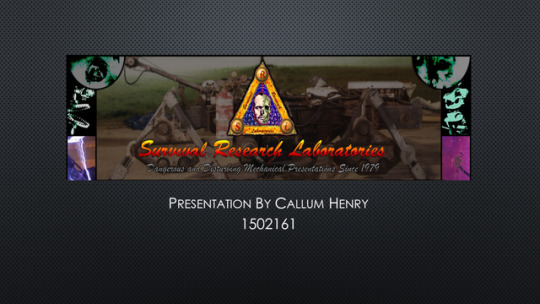
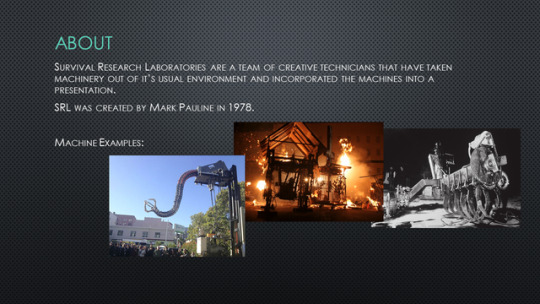

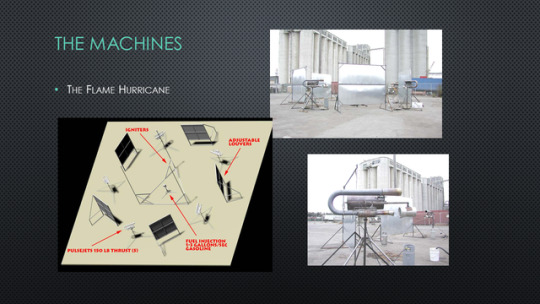
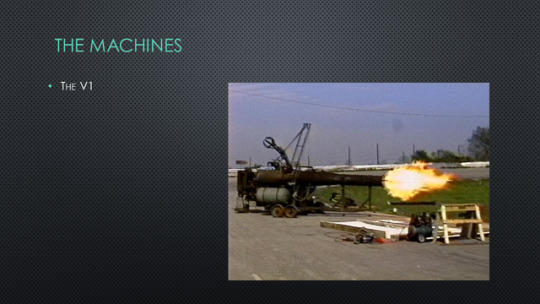
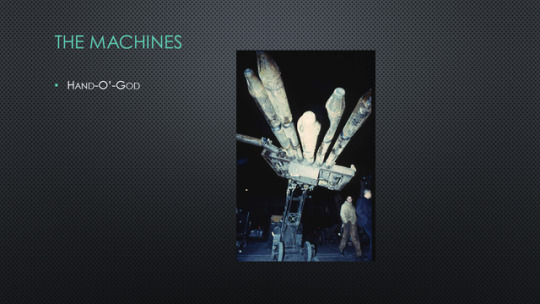

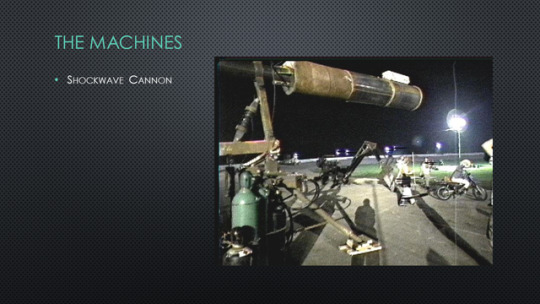

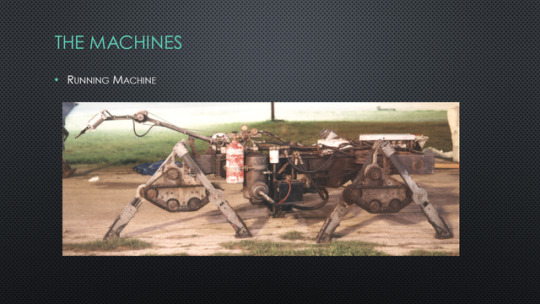
Survivial Research Laboratories Design Context Presentation
0 notes
Text
Art Critique: Ross Tran - Korra
Ross Tran asks his fans to choose what he draws and it seemed automatic to critique his piece of artwork which first caught my eye when scrolling on Artstation. His take on the widely popular character Korra, from The Legend of Korra. Uploaded on January 28th 2016.
Tran is an interesting artist due to the fact he didn’t straight away jump in and create Korra which I imagine many artists might do. He has an interesting design process when creating his art. Starting with a sketch of Korra, Tran then goes to a frozen yogurt store and takes a picture up close of the ice cream he got and uses the picture as his whole concept inspiration for his Korra piece.
When the frozen yogurt image is transferred onto the sketch in Photoshop, the art itself looks amorphous but it also creates intrigue as to how Tran is going to take frozen yogurt and turn it into Korra. Using the color in the frozen yogurt Tran paints in the base color outline of Korra. What works so well in his design process is that he can use the texture and linearity within the ice cream to help with his design of Korra’s stance and how her clothing flows.
Each piece of Tran’s artwork is incredibly striking due to his accents of color throughout his portfolio
To create more attention on Korra’s face in Tran’s piece he used the debris brush in Photoshop to create an outline of energy starting at Korra’s hand and works around her body resulting in a contrasting pink colour to the drawings background which creates an effective focal point of Korra’s hand and her face.
The use of space in the entire piece is extremely well thought through with nods to the world of Korra including her pet polar bear dog ‘Naga’ to her right and the air ship in the sky which was a prominent use of transportation throughout the TV series. The composition of the overall piece has been very well thought out with no space being wasted in the drawing.
Tran’s fur texture is executed by starting with a dark tone colour base on Korra’s collar and then using a lighter colour. With light strokes Tran creates a vibrant looking fur due to the dark tone harmonising with the white exceedingly well.
Another technique Tran uses in many of his pieces is Colour Dodging. This essentially combines two layers In Photoshop to provide an outcome of a balance between the layers thus providing a stronger realistic highlight within Tran’s piece. This effect is easily seen at use on Korra’s hand and her eyes which only enhances the drawings portray of Korra’s power.
Tran’s piece is very fitting as far as Korra the character goes. She was one of the most powerful beings in her TV series and Tran’s composition of this piece shows that. With his use of complementary bright and striking colours, the sharp bursts of pink in the energy flow around Korra, and the form of a lot of commotion in the drawing overall, you can physically see and get a sense of Korra’s power. Although your focal point goes straight to Korra’s face, you’ll find that the more that you look at the drawing your eyes will keep on moving looking at every small detail and nuance to Korra’s show which serves justice to the fans of not only Tran’s work but to the fans of Korra’s show as well.
Overall the Korra piece is powerful addition to Tran’s portfolio. Not only has Tran paid homage to an overwhelmingly popular anime character with a unique twist of using frozen yogurt, but his work continues to stay fresh and vibrant with his signature style of explosive colour and striking composition.
As far as originality goes Tran is in his own field when it comes to his approach on drawing and style. With Tran’s use of complementary neon-like colours it makes his art stand out even more from the rest of the portfolios out there. I’m excited to see what else comes from Tran as an artist.
0 notes
Text
Game Critique: To The Moon
A needle in a haystack is a realistic description for the game, To the Moon.
Created by Freebird Games and released in Nov 2011, To the Moon is a single-player game, driven by its heart wrenching story.
You play as either of two main protagonists, Dr Rosalene or Dr Watts. Partners, whose job is to give their patients their last wish while they are on their death bed. Johnny, who is the main character and patient in the game, is already unconscious when the Doctors arrive. The player is sent back through key memories in Johnny’s life, altering their outcome’s so that the end of the procedure results in Johnny’s dying wish coming true in his mind.
Set in third-person, using keyboard and mouse, the player navigates through the game with only one real mechanic, picking up memory fragments. As the game is narrative-driven it navigates away from the usual mechanics of any combat or weapons and has a simplistic yet effective mechanic and mini-game.
The overall level design throughout the game creates a caring relationship between the player and Johnny as you learn about his life through watching his interaction with other characters in his memories and the players own interactions with other NPCs as you learn more about him. You are essentially living through Johnny’s unwritten memoirs and you feel a great sense of difficulty altering Johnny’s past which can have horrific repercussions to the memories he already loves.
The game uniquely uses foregrounding as the player is going through Johnny’s memories, you are simultaneously constantly worrying about Johnny in the real world as his health continues to deteriorate
Importantly, through each play through, I struggled to ever lose immersion as each cutscene is set within the game world that the player moves in. An excellent move on the game designer’s part, this game uses a plot aimed to trigger the players from an emotional stand point, having suitably fitting cutscenes allows the story to always stay fluid and provides a better execution of the games aim.
It’s important to realise how ‘To the Moon’ breaks the gaming industry barriers. Proving that you do not need to have high definition resolutions paired with stunning high poly assets to create an overwhelming narrative experience and a game that truly plays with important human emotions and fears with, what I believe to be, flawless execution. The developers used RPG Maker XP as their game-engine and the game running at a resolution of 640x480 which is a far cry for what triple-A developers strive for and almost always never reach the intense level of emotional that I have felt through playing ‘To the Moon’.
In conclusion, I believe that To the Moon is truly a masterpiece. In a sea filled with games containing all the filler and repetition that we are all so used to in the industry today. The developers have intelligently stripped back what makes an incredible narrative experience, ending the game with nothing more than pure emotion in its focalisation. The gaming narrative and experience will leave you feeling strangely more human than you did when you started the game.
0 notes
Text
Do game designers and artists need an ethical code?
Everyone has their own individual ethics and beliefs. Law itself is different to this as the law is a set of rules in society to keep order and provide safety to citizens. Not everyone believes in all of these laws due to the diversity of our society.
Ethics in games is tricky, as most people do share pleasant ethics but not everyone has the same moral principles. I believe in the side of having no ethics in a game if the game has an effective reason as to having no admirable ethics, for example maybe taking on an abstract approach to society within a video game or exploring moral choices in video games. I believe these situations are suitable.
In conclusion I believe that since games are overall used as a pass-time and an enjoyable media overall then it should be allowed to play on the boundaries of ethics as many games would benefit with a changing in a moral compass to give the player a unique gaming experience and allows designers and artists to create assets and games with a lot more innovation.
1 note
·
View note
Text
Should Video Games Be Viewed As Art ?
Everyone is allowed their own personal opinion. If someone labels a game as art and provides an explanation as to why then it should be viewed as art.
As not every game is similar I believe this question can’t really be asked as an umbrella statement as games as a whole if everyone is allowed their own interpretation of art.
For me, I believe that if the definition of art in the dictionary is ‘ the expression or application of human creative skill and imagination’, games are a creative media with imagination in every game therefore games are art by definition.
0 notes
Text
Should Games Be Designed To Entice Players To Spend Money?
0 notes
